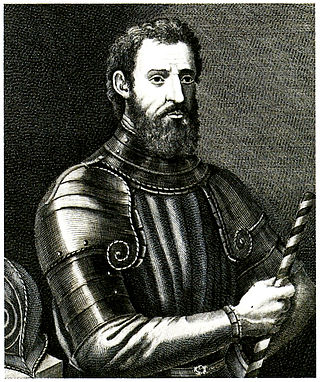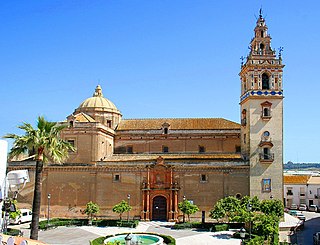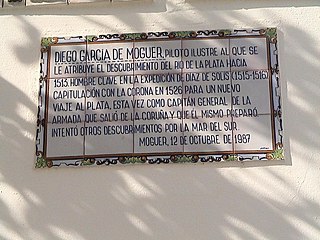Related Research Articles

Albrecht Dürer, sometimes spelled in English as Durer or Duerer, was a German painter, printmaker, and theorist of the German Renaissance. Born in Nuremberg, Dürer established his reputation and influence across Europe in his twenties due to his high-quality woodcut prints. He was in contact with the major Italian artists of his time, including Raphael, Giovanni Bellini, and Leonardo da Vinci, and from 1512 was patronized by Emperor Maximilian I.
The 1520s decade ran from January 1, 1520, to December 31, 1529.

Year 1528 (MDXXVIII) was a leap year starting on Wednesday of the Julian calendar.

Year 1524 (MDXXIV) was a leap year starting on Friday of the Julian calendar.
Year 1485 (MCDLXXXV) was a common year starting on Saturday of the Julian calendar.

Giovanni da Verrazzano was an Italian (Florentine) explorer of North America, in the service of King Francis I of France.

Renaissance art is the painting, sculpture, and decorative arts of the period of European history known as the Renaissance, which emerged as a distinct style in Italy in about AD 1400, in parallel with developments which occurred in philosophy, literature, music, science, and technology. Renaissance art took as its foundation the art of Classical antiquity, perceived as the noblest of ancient traditions, but transformed that tradition by absorbing recent developments in the art of Northern Europe and by applying contemporary scientific knowledge. Along with Renaissance humanist philosophy, it spread throughout Europe, affecting both artists and their patrons with the development of new techniques and new artistic sensibilities. For art historians, Renaissance art marks the transition of Europe from the medieval period to the Early Modern age.

In art history, "Old Master" refers to any painter of skill who worked in Europe before about 1800, or a painting by such an artist. An "old master print" is an original print made by an artist in the same period. The term "old master drawing" is used in the same way.

The Alte Pinakothek is an art museum located in the Kunstareal area in Munich, Germany. It is one of the oldest galleries in the world and houses a significant collection of Old Master paintings. The name Alte (Old) Pinakothek refers to the time period covered by the collection—from the fourteenth to the eighteenth century. The Neue Pinakothek, re-built in 1981, covers nineteenth-century art, and Pinakothek der Moderne, opened in 2002, exhibits modern art. All three galleries are part of the Bavarian State Painting Collections, an organization of the Free state of Bavaria.

Moguer is a municipality and small city located in the province of Huelva, Andalusia, Spain. According to the 2022 census, it has a population of 22,623. Its surface area is 204 square kilometres (79 sq mi), and its population density is 106.36 per square kilometre (275.5/sq mi).

Dürer's Rhinoceros is the name commonly given to a woodcut executed by German artist Albrecht Dürer in 1515. Dürer never saw the actual rhinoceros which was the first living example seen in Europe since Roman times. Instead the image is based on an anonymous written description and brief sketch of an Indian rhinoceros that had arrived in Lisbon in 1515. Later that year, the King of Portugal, Manuel I, sent the animal as a gift for Pope Leo X, but it died in a shipwreck off the coast of Italy. A live rhinoceros was not seen again until a second specimen, named Abada, arrived from India at the court of Sebastian of Portugal in 1577.
The decade of the 1490s in art involved some significant events.
The decade of the 1470s in art involved some significant events.

The National Gallery is the primary British national public art gallery, sited on Trafalgar Square, in central London. It is home to one of the world's greatest collections of Western European paintings. Founded in 1824, from an initial purchase of 36 paintings by the British Government, its collections have since grown to about 2,300 paintings by roughly 750 artists dating from the mid-13th century to 1900, most of which are on display. This page lists some of the highlights of the collection.
The year 1524 in science and technology included a number of events, some of which are listed here.
The year 1586 in science and technology included a number of events, some of which are listed here.
Sancti Spiritu was a fortification established in 1527 near the Paraná River by the explorer Sebastian Cabot. It was the first European settlement in the territory of modern Argentina and was destroyed by Amerindians two years later.

The Leonardeschi were the large group of artists who worked in the studio of, or under the influence of, Leonardo da Vinci. They were artists of Italian Renaissance painting, although his influence extended to many countries within Europe.

Diego García de Moguer was a Spanish explorer who also sailed for the Portuguese Crown later in life.
References
- ↑ Los viajes de Diego García de Moguer.
- ↑ Palmer, Alan; Palmer, Veronica (1992). The Chronology of British History. London: Century Ltd. pp. 142–145. ISBN 0-7126-5616-2.
- ↑ Müller, Peter O. (1993). Substantiv-Derivation in den Schriften Albrecht Dürers. Berlin: Walter de Gruyter. ISBN 3-11-012815-2.
- ↑ Wroth, Lawrence C. (1970). The Voyages of Giovanni da Verrazzano, 1524-1528 . New Haven: Yale University Press. p. 237. ISBN 0-300-01207-1.